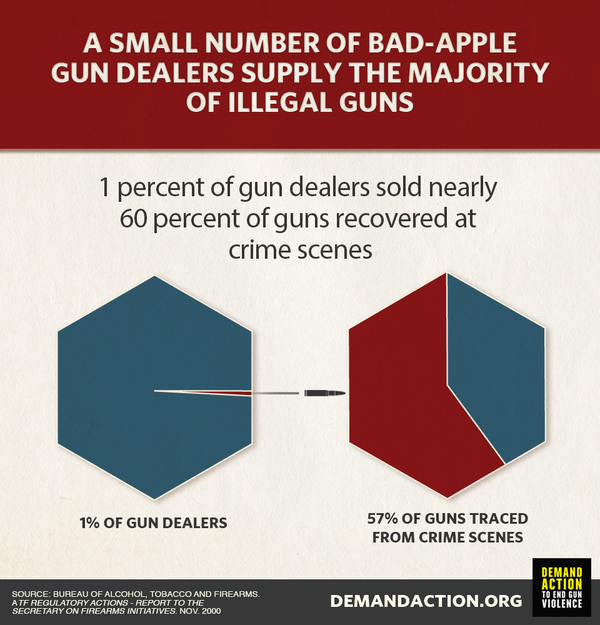Anybody reading this will say that the message is simple: 60% of the guns recovered in all crime scenes come from 1% of gun dealers, right?
Well, not quite so. Here is a screen cap of the original report:
So it is not all the guns recovered from crime scenes but just the guns that were able to be traced to 1.2% of the 83,200 licensed retail dealers and pawnbrokers at that time.
But even so, those dealers that break the law must be punished, right? The way that ATF deals with that is the revocation of the license and possible indictment on gun trafficking charges. Does that mean that 1,02 FFLs were revoked?
That number of 20 FFLs whose licenses were revoked (I assume) come out to be 0.24% of all Gun Dealers in the US at that time. As it happened, most of the other FFLs’ violations were poor record keeping, bad inventory and other administrative issues and given reprimands. As far as I could see in the report, no indictments were handed down for gun trafficking.
I could dice and slice the graphic even more by applying some other considerations, but I think this sums it up pretty much: They lie because if they told the truth, they would not have an issue to complain about.




The fact that out of 1,020 FFLs, 1,000 did not get their licenses revoked tells me one thing: the vast majority of FFLs, when investigated, provided the paperwork to show that the sale was legal and followed all the rules. IOW, they are not responsible for any crimes committed with guns that happened to come through their stores.
Further, I strongly suspect that that “1% of FFLs” who sold “57% of crime guns” are from areas like Chicago, New York City, and Washington, D.C. – i.e. areas with very high crime rates and very few FFLs (see Washington, D.C., with one legal FFL). Naturally, those particular licensees will have sold a disproportionately-large number of guns that – after being stolen from the legal owner or sold illegally by the otherwise-legal buyer – eventually become crime guns.
All that data is available, I’m sure, but it doesn’t fit The Narrative, so it doesn’t get included in their propaganda.
Bingo… that was the other slice I did not want to get into. I am almost sure that one of those investigated FFLs here in Miami is Lou’s Police Supply which I think it is one of the oldest stores here and they move a lot of guns. In my fact, my first gun bought here was from them. The name of the store was “accidentally” given to the Miami Herald who asked for an interview and were told to piss off (not using those polite words). Lou’s biggest clientele are cops and their workers are retired cops or people related to cops.
Also note how it says “Active FFL”, so some recovered guns can’t be traced for various reasons, and some might be traced back to FFLs that are no longer active, and given the long “time-to-crime” numbers we see is generally greater than 10 years, that’s plenty of time for Mom&Pop gun shop to either shut down, or decide that selling guns isn’t worth the hassle.
Hell just think of all the JC Higgins, or Glenfield guns that are not “untraceable” because Sears stopped selling firearms.
[…] Go read this article… […]
[…] Or what’s wrong with anti-gun “statistics” […]
I’m guessing that there is a very strong correlation with the overall number of guns sold. As in… !% of FFLs are responsible for selling nearly 60% of all guns.
I’m guessing that there are about 100 small gun dealers for every big store (Cabela’s, Bass Pro Shop, Sportsman”s Warehouse, Academy, Wal-Mart, etc).